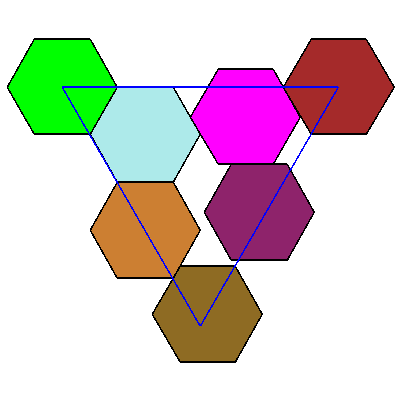Given a non-negative integer $m$, let $\Omega_m$ denote the set of vectors $\omega = (\omega_1, \dots, \omega_m) \in [0, 1]^m$ such that $\sum_i{\omega_i} = 1$. The set $\Omega_m$ is together with a metric $d_M$, that is the Manhattan distance between vectors, i.e., $\forall \omega, \omega' \in \Omega_m$, $d_M(\omega, \omega') = \sum_i{|\omega_i - \omega'_i|}$. Given $S \subseteq \Omega_m$, we denote $\min(d_M, S) = \min_{\omega, \omega' \in S}{d_M(\omega, \omega')}$.
I am interested in the following ``most diverse $k$-subset'' problem: given two non-negative integers $m, k$, return a set $S \subset \Omega_m$ of size $k$ that maximizes $\min(d_M, S)$ (i.e., $S$ is such that $\forall S' \subset \Omega_m$ with $|S'| = k$, we have $\min(d_M, S') \leq \min(d_M, S)$).
For example, if $m = 3$ and $k = 4$, it seems that the only possible resulting set is $S = \{(0, 0, 1), (0, 1, 0), (1, 0, 0), (1/3, 1/3, 1/3)\}$, with $\min(d_M, S) = 4/3$.
What would be the general algorithm to compute $S$, for all non-negative integers $m, k$?





